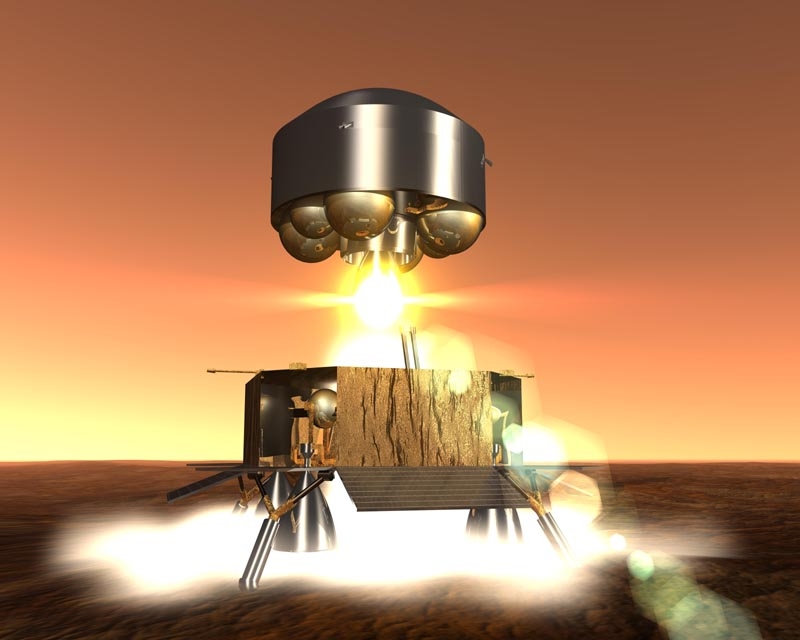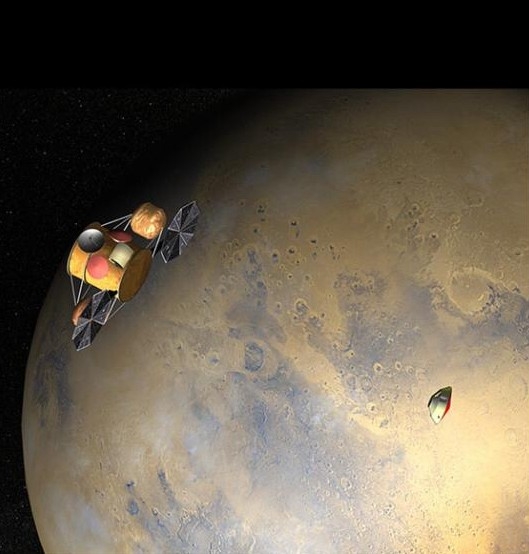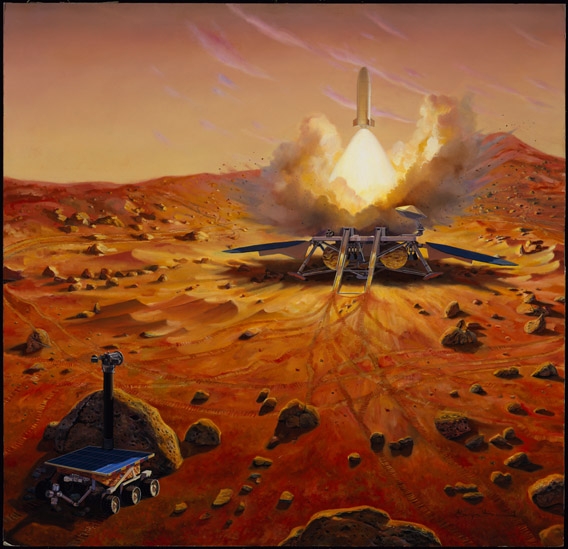6 October 2008
A clear success
“We achieved what we set out to do,” affirms planetologist Francis Rocard, in charge at CNES of organizing with ESA this 1st gathering devoted to a future Mars sample return mission. The conference was held in the auditorium of the Bibliothèque Nationale de France in Paris, with 150 to 200 scientists, industry representatives and politicians in attendance to review progress in planning an international mission.
Mars Sample Return (MSR) could be launched around 2020 by ESA and NASA.
Although discussions are chiefly between the big space powers for now, lower-level players are not being ruled out. “Representatives of the major space agencies were present in Paris, but anyone who wants to be involved in this adventure is welcome,” affirms Francis Rocard.
Although discussions are chiefly between the big space powers for now, lower-level players are not being ruled out. “Representatives of the major space agencies were present in Paris, but anyone who wants to be involved in this adventure is welcome,” affirms Francis Rocard.
Feasibility studies in 2013

At the conference, the iMARS group (International Mars Architecture for Return of Samples) presented the results of the last 6 months spent working on possible mission scenarios.
“We haven’t yet reached the stage of deciding on a mission scenario; we’re simply weighing up the advantages and drawbacks of each,” explains Francis Rocard. “The next report, in 2009, will address the roles that participating space agencies intend to adopt.”
Initial feasibility studies for MSR are expected to go ahead in 2013, 10 years before the mission’s scheduled return from Mars. “Returning samples is a very complicated business,” recalls Francis Rocard. “We are going to have to retrieve a small container, with much less inertia than a spacecraft, from orbit around Mars. This phase of the mission will be tested in Earth orbit first.”
A few hundred grams of Martian soil could therefore be arriving back here on Earth in 2023, requiring extreme precautions. The samples will first be quarantined in a sealed laboratory to ensure they pose no threat to life on Earth before being distributed to research laboratories.


